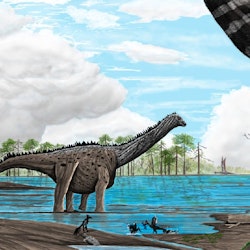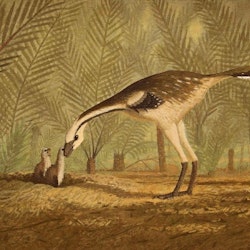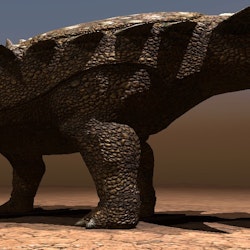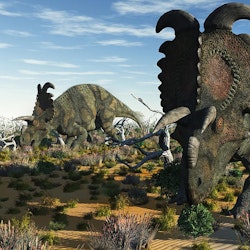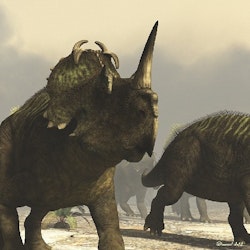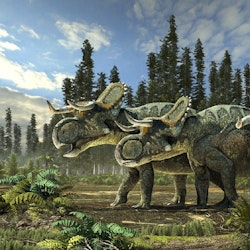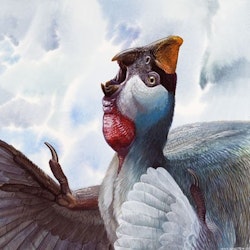Want to see other dinosaurs besides the ones from Cretaceous? See all dinosaurs.
Search: or pick one for me
The disintegration of Pangaea was well under way. The Atlantic was getting wider, and Europe was an island. Antarctica had parted from Africa and was drifting eastward on the same tectonic plate as the future Australia. The Indian subcontinent had also taken leave of Africa and was headed for a collision with Asia. Flowering plants had evolved and were spreading rapidly over the planet.
Theropod and sauropod dinosaurs still ruled the roost, while tiny mammal species struggled to survive in their shadow. Flights of Pteranodons and Pterosaurs darkened the sky, and the sea creatures of the Jurassic continued to flourish. His Majesty T. Rex was king of all he surveyed. New forms arose, such as the club-tailed Ankylosaurids and the three-horned Triceratops family. Small lizards spread widely, exploiting every possible niche, and one line of reptiles lost their legs to found the ophidian dynasty: Snakes! Turtles, tortoises and alligators were widespread.
The dinosaurian paradise ended some 60 million years ago. The Chicxulub meteor impact may have been the body blow that shattered the balance of life on the planet. Perhaps vulcanism or climatic changes were also responsible. But for the dinosaurs, and any species larger than a modern family dog, the world had ended. Birds came through the crisis. For mammals like ourselves, a new world was there for the taking. Today we study dinosaur fossils, and feel a sense of wonder.
